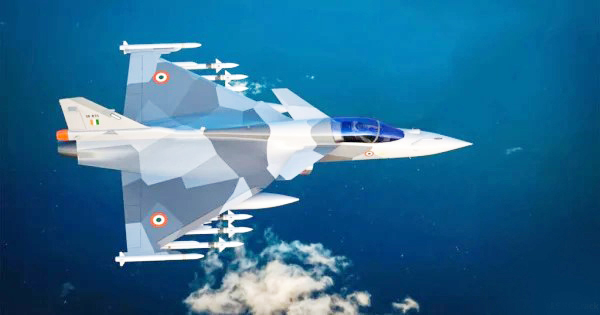Set to replace Mirage-2000s and Jaguars of IAF, Tejas MK-2 cannot afford supply disruptions as it happened for Tejas MK-1A.
NEW DELHI: Operation Sindoor was perhaps one of the finest manifestations of India’s decisive political leadership in Modi era, proficiency of Indian Armed Forces to conduct precision strikes in a limited time frame with well-defined military objectives, as well as a global demonstration of India’s successful military tactics, and capability of its domestic military industrial complex.
It also was an experiential treat for military analysts as well, who were baffled by the kind of strategic restraint that India’s politico-military leadership displayed from a position of strength, and agreed to a ceasefire even when Pakistan was on severe backfoot, thereby vindicating Inda’s genuine intent of not getting entangled in long drawn conflicts, even while making it clear that India’s security objectives are well defined now.
Henceforth, any mischief by Pakistan or someone else, would be reciprocated with lethal dose of retaliation. The coordinated and synchronised operations by Indian Armed Forces was ably supported by India’s Political leadership, diplomats, and law enforcement agencies, who kept vigil on all fronts while Operation Sindoor was being executed. From Akash to Brahmos, from indigenously made loitering munitions to radars, India’s domestic military industrial capability was packing a punch that was far beyond expectations.
MISSING IN ACTION
Yet, in the middle of all these activities, one major Indian military hardware was “Missing in Action”. It was the Tejas MK-1A combat jets. One is compelled to remember what Indian Air Force (IAF) Chief, Air Chief Marshal (ACM) A.P. Singh had stated in February 2025, when he, while sitting inside a Hindustan Aeronautics Limited (HAL) made jet trainer cockpit, told the HAL CMD, D.K. Sunil, “At the moment, I am just not confident of HAL, which is a very wrong thing to happen.” In the same Aero India show, he had also stated, “I was promised, when I come here in February, I will see 11 MK-1As ready minus the engines. That is what I was promised. But not a single (one) is ready.” IAF, under ACM A.P. Singh, meanwhile, performed magnificently during Operation Sindoor, and delivered what was expected from IAF.
Therefore, no one can say that IAF Chief was unnecessarily pointing fingers at HAL. In a recent interview to PTI, HAL CMD D.K. Sunil stated that IAF would get at least six Tejas MK-1A by March 2026, and attributed the delays in delivery due to “GE Aerospace missing the deadlines for supply of its engines”. It must be remembered that HAL signed contract with Ministry of Defence in February 2021 for 73 Tejas MK-1A and 10 Tejas MK-1 trainers. GE Aerospace delivered the first engine for Tejas MK-1A in late March 2025, almost four years after the contract was signed in August 2021 for delivery of 99 F404- IN20 engines in a $716 million deal.
Deliveries have already been delayed considerably, and given the trajectory of how things have been unfolding, it would not be surprising if HAL misses the deadline of March 2026 as well, because the entire plan hinges on GE Aerospace delivering the engines on time. Incidentally, GE Aerospace is expected to deliver two engines every month from July 2025 onward, with an overall delivery of 12 GE F404-IN20 engines this fiscal, as per media reports.
IMPACT OF U.S.-INDIA RELATIONSHIP
Interestingly, against this backdrop, a few things have to be kept in mind. While in most cases, constraints pertaining to supply chains are shelled out as usual pretexts for delays in deliveries, what would always remain in the realm of speculation is to what extent such delays are purely for that reason. One can never discount the fact that for any country worth the name, especially relevant for the US, its military industrial complex, is deeply intertwined with the country’s foreign policy, and relation with those countries, who are the clients of its defence industry. Since the beginning of the Russia-Ukraine conflict, India’s defiant display of strategic autonomy, coupled with major efforts towards becoming selfreliant in manufacturing, refusal to import vaccines from US during Covid phase, quest to develop its own military industrial complex, and spectacular success in Operation Sindoor, perhaps have not gone down too well with many in the American establishment and think tanks.
For many in the West, a country with a $4 trillion GDP, which has successfully brought out more than 250 million out of multidimensional poverty in the last one decade, and is emerging as an industrial powerhouse with a foreign policy, distinctly of its own, is a potential “problem for tomorrow”. Against this backdrop, how much India can depend on the US for combat jet engines in future, is a million-dollar question, “strategic partnership” between the two notwithstanding. The recent cosying up of the Trump Administration towards Pakistan can be construed as a potential indication of shape of things to come.
RECONSIDER ALTERNATE OPTIONS
Incidentally, India has never acquired any offensive combat jet platform from American companies, even though it has acquired more than $28 billion worth of military equipment from the US since 2008. It has never been comfortable with that proposition, given the strings that usually come attached with such a deal. While India has little option than to wait for GE Aerospace to deliver the engines for the rest of the Tejas MK-1A (83 in total) in order, should India opt for 97 more MK-1A with the same GE F-404 engines, given the engine delay experience, is the key question to be asked. Even if India does so, considering GE Aerospace streamlines engine supply, will there be a surety of supply if US-India relations reach a stalemate, as it appears to be, in spite of many areas of convergence and shared mutual interests? The more pertinent issue that deserves attention is the statement of HAL CMD that the deal with GE Aerospace for F-414 engine for Tejas MK-2, will be sealed by March 2026.
Even with an 80% of Transfer of Technology (ToT), as reported, and local production, India would have considerable dependence on the US for its combat jet engine production and sustainability. Considering that Tejas MK-2 is still at a structural assembly stage, the most critical question is whether India should also explore other viable engine options with less of geopolitical baggage.
RUSSIAN OR FRENCH OPTIONS FOR TEJAS MK-2 ENGINES?
In this context, India has many options in place, starting from exploring Russian and French alternatives. Incidentally, both Dassault and its Tier-I vendors such as engine maker Safran have started the process of sourcing critical components from India. While Dassault is moving the production of fuselage and even wings of Rafale jets to India, Safran too has been working on major component sourcing and developing MRO facilities for its engines in India. Safran already collaborates with HAL in many spheres. Meanwhile, HAL has also been manufacturing Russian jet engines, under licence, for quite some time now. In essence, Tejas MK-2, which is supposed to replace Mirage 2000s, Jaguars and Mig 29s of IAF, cannot simply afford to have the kind of disruptions in supply, as is being faced by Tejas MK-1A.
WIN-WIN OPTION FOR HAL & IAF?
Therefore, India must consider sourcing engines of Tejas MK-2, and even for future MK-1A jets, from such countries who would not link their defence deals with India’s foreign policy and strategic positioning. Both Russia and France being less interfering in nature, when it comes to battlefield applications of offensive platforms they have sold, can be more viable options.
A Safran venture in India for Tejas MK-2 engine production, coupled with future prospects of more Rafale orders from IAF under Multi-Role Fighter Aircraft (MRFA) program, both having similar engines, can be a game changer for India, devoid of the kind of problems India is facing due to Tejas MK-1A delivery. It will be a win-win situation for both IAF and HAL. Either way, India must race against time to finalise the MRFA deal, because the next conflict may be just round the corner.
Pathikrit Payne is a Senior Research Fellow with Dr. Syama Prasad Mookerjee Research Foundation, New Delhi.








